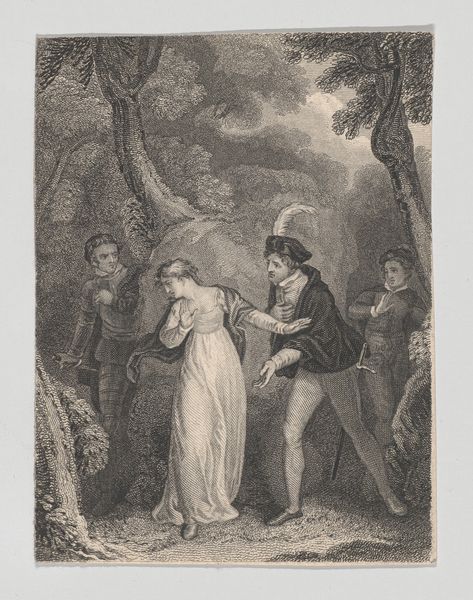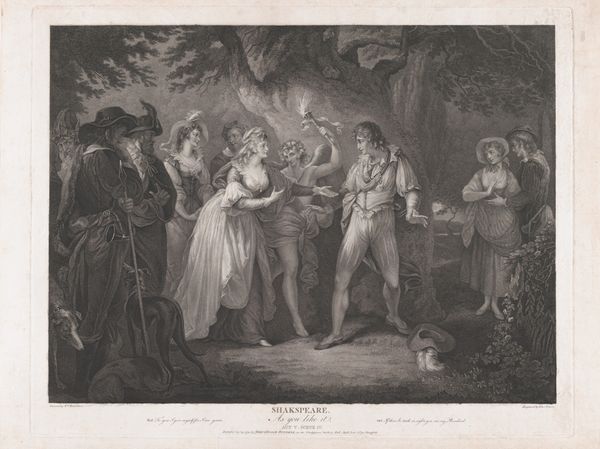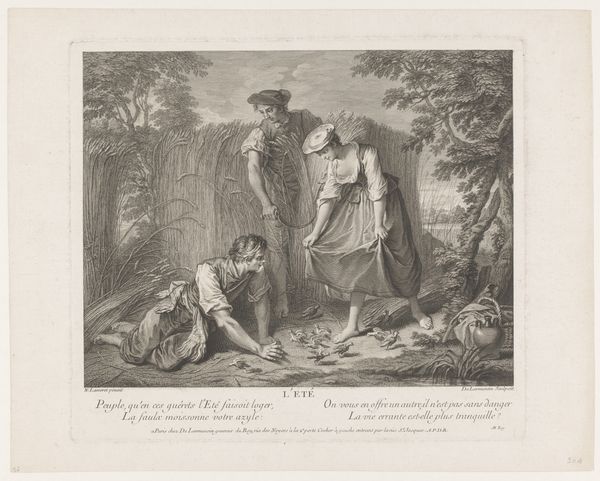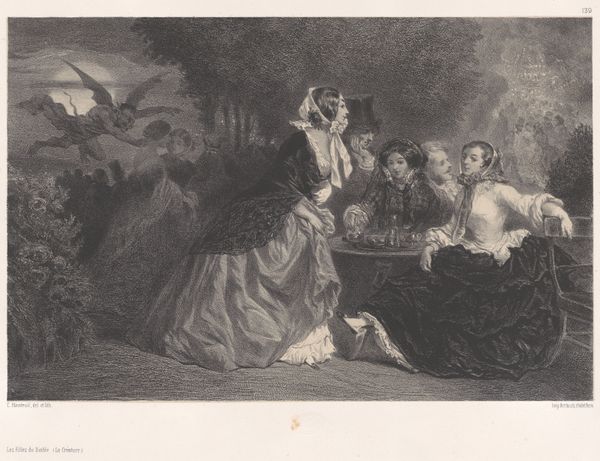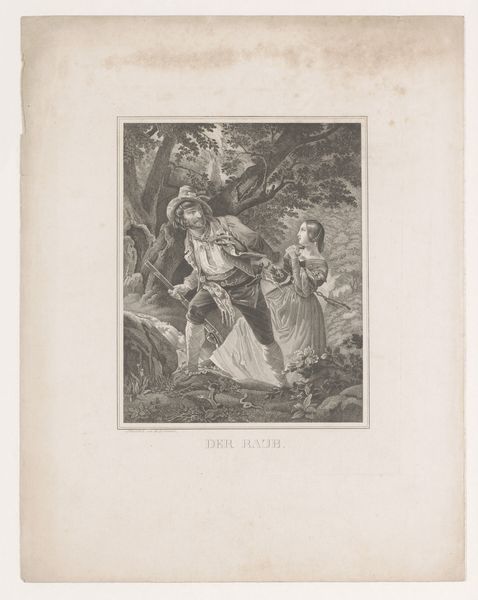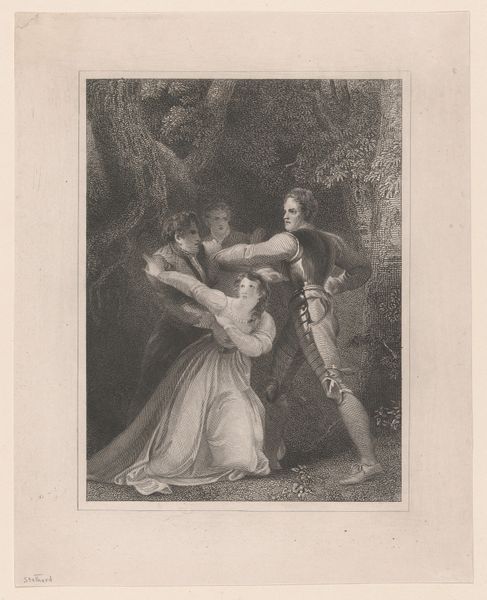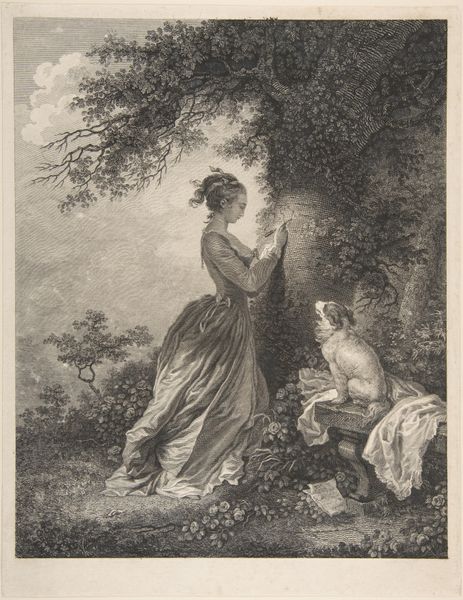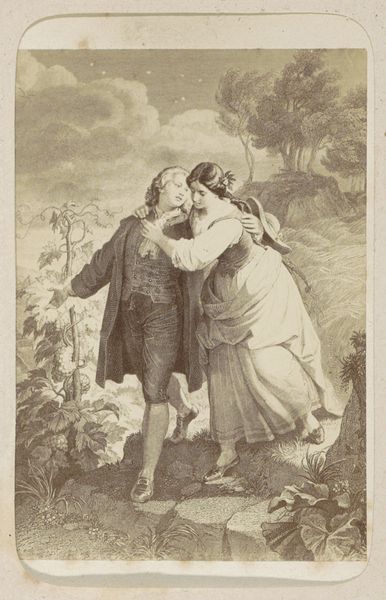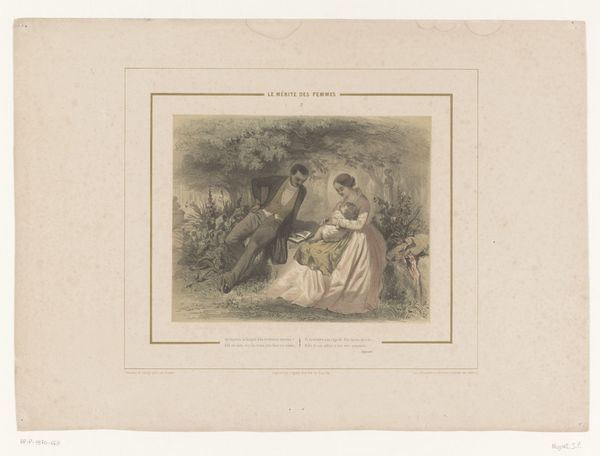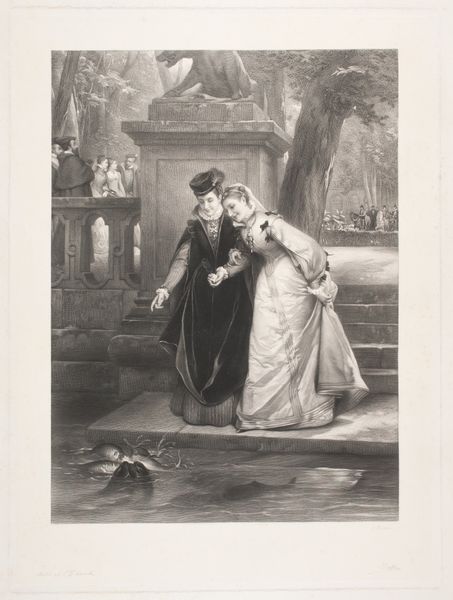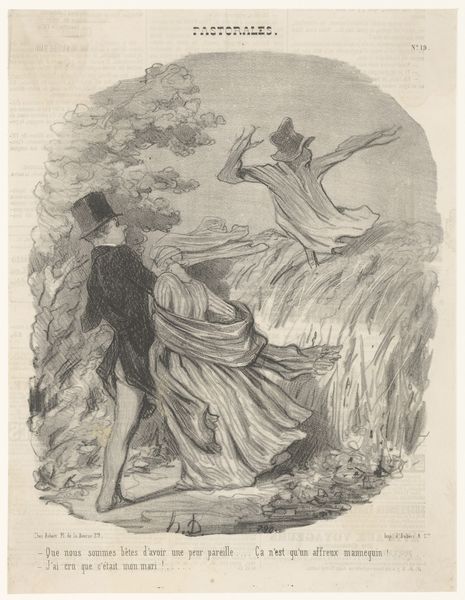
Pisanio and Imogen (Shakespeare, Cymbeline, Act 3, Scene 4) 1801 - 1852
0:00
0:00
drawing, print, engraving
#
drawing
# print
#
landscape
#
figuration
#
romanticism
#
19th century
#
men
#
history-painting
#
engraving
Dimensions: Plate: 17 1/2 × 23 1/2 in. (44.5 × 59.7 cm) Sheet: 21 7/8 × 27 3/4 in. (55.5 × 70.5 cm)
Copyright: Public Domain
Editor: Here we have Robert Thew’s print, "Pisanio and Imogen" created sometime between 1801 and 1852. It looks like an engraving, and it definitely captures a tense moment. There's a lot of drama in the figures and the landscape. What's your take on this piece? Curator: Considering its time, we can read this image as a confluence of materiality and societal expectations around the consumption of art. Engravings like these were often reproduced, making art accessible to a broader audience. Think about the labor involved in creating the initial artwork and then reproducing it mechanically. The very *process* cheapens its “artistic value” in the eyes of some. Editor: That’s an interesting point. I hadn’t considered the production process itself affecting the perception of its artistic merit. So, are you saying the fact that it's a print, designed to be reproduced, makes it a statement in itself about the commodification of art? Curator: Exactly! Furthermore, the image itself depicts a scene of tension. Considering the social context, do you see any correlation between this visual narrative and, say, gender roles of the time? Are these roles reinforced or challenged by the chosen method of distribution and the material itself? Editor: That's a great question! I suppose engravings, being more accessible, would have exposed more people to such narratives, potentially reinforcing existing societal views but perhaps also opening the door to critical discussion. Thinking about it materially, the creation of this engraving and others created employment for skilled laborers, although it took this labor out of the “prestige art” category. Curator: Precisely! So much of its value shifts when considered outside the standard ‘artist-genius’ framework. Editor: I never really thought about prints like this in that light before. Looking at the materials, the process, and its role in society completely changes the way I see it. Curator: Right? Now consider all art like this, as part of production and distribution networks tied to economics and class, instead of aesthetic ideas separate from everyday life.
Comments
No comments
Be the first to comment and join the conversation on the ultimate creative platform.

